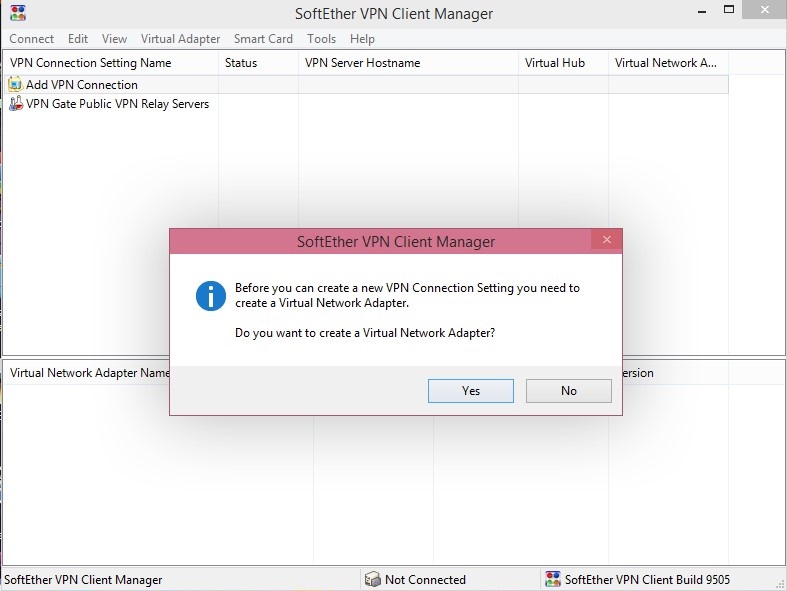
The server administrator should be able to supply you with these details. At a minimum, you will need to:ī) Enter the Host Name, Port Number and Virtual Hub Name of the VPN server you wish to connect to. The exact settings required depend on how the SoftEther server has been configured. Say Yes to Do you want to create a Virtual Network Adapter and assign the new adapter a name.ĭouble-click again on Add VPN Connection to enter the New VPN Connection Properties screen. Once installed, double-click on Add VPN Connection. When asked which components to install, select SoftEther VPN Client. Intel (x86 and x96) will be auto-selected as the CPU option, as it is the one available for Windows.Ĭhoose the latest version of the Client and install it as you would any other Windows program. What we are looking for is the SoftEther VPN Client for the Windows platform. Only the Windows SoftEther client has a proper GUI, and for other reasons discussed below, Windows is the only platform either we or the SoftEther team recommend running the client software on.ĭownload and install the software from the SoftEther Download Center. The official advice is to use the SoftEther client to take full advantage of a SoftEther server’s performance, but this advice is then immediately contradicted for all platforms except Windows. To use the SoftEther protocol, you must connect to a SoftEther server using a SoftEther client, but you can also connect to a SoftEther server using the OpenVPN or L2TP/IPsec protocols. The name SoftEther comes from how the VPN solution virtualizes Ethernet devices to create a software-based virtual private network tunnel.As we discuss in our gude on how to configure SoftEther VPN server in Windows, SoftEther is both a VPN client and an SSL VPN protocol.

SoftEther relies on a unique architecture that resembles the physical network card, Ethernet cable, and Ethernet switch.



Note some of the features of the SoftEther VPN platform:


 0 kommentar(er)
0 kommentar(er)
